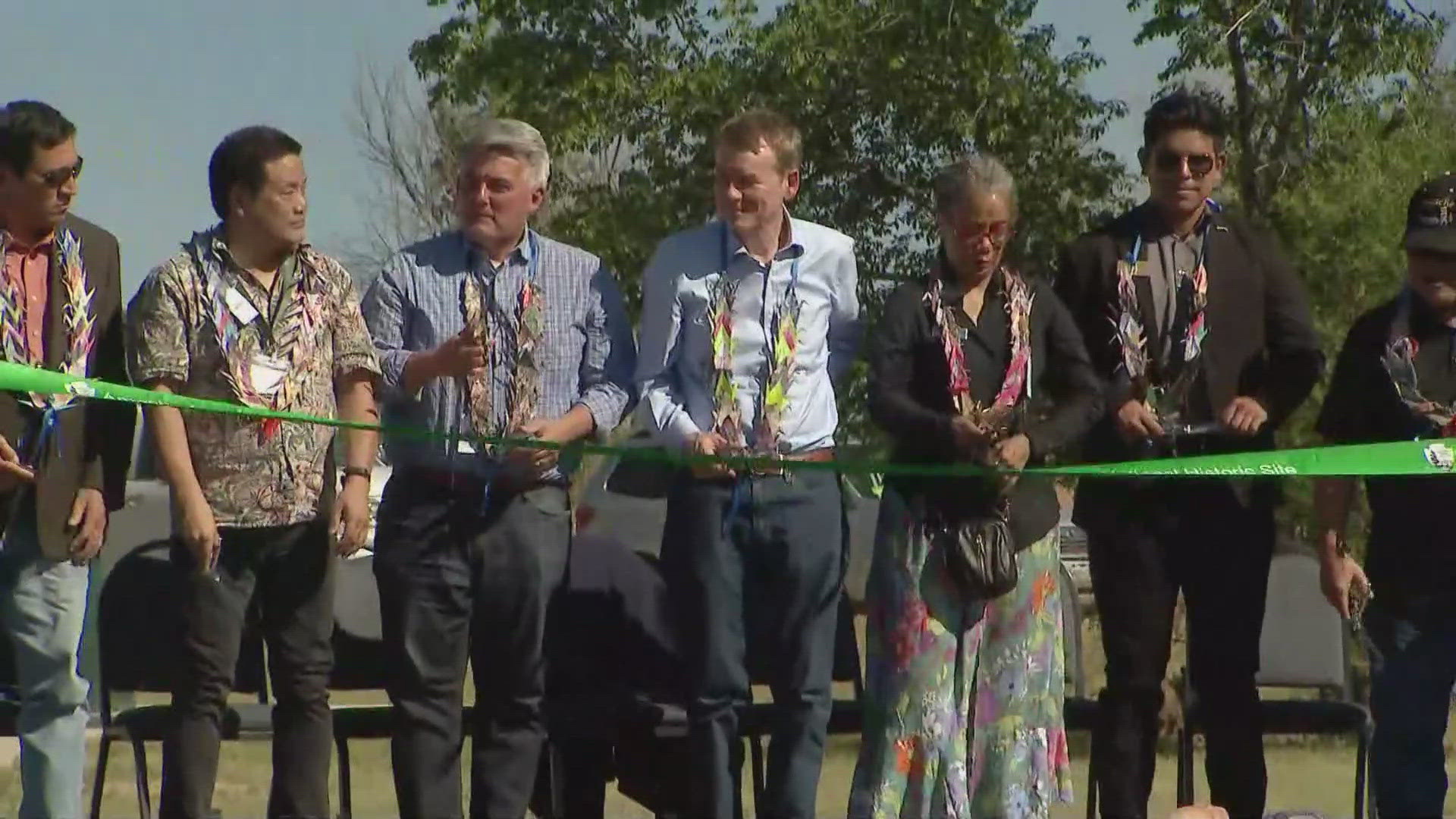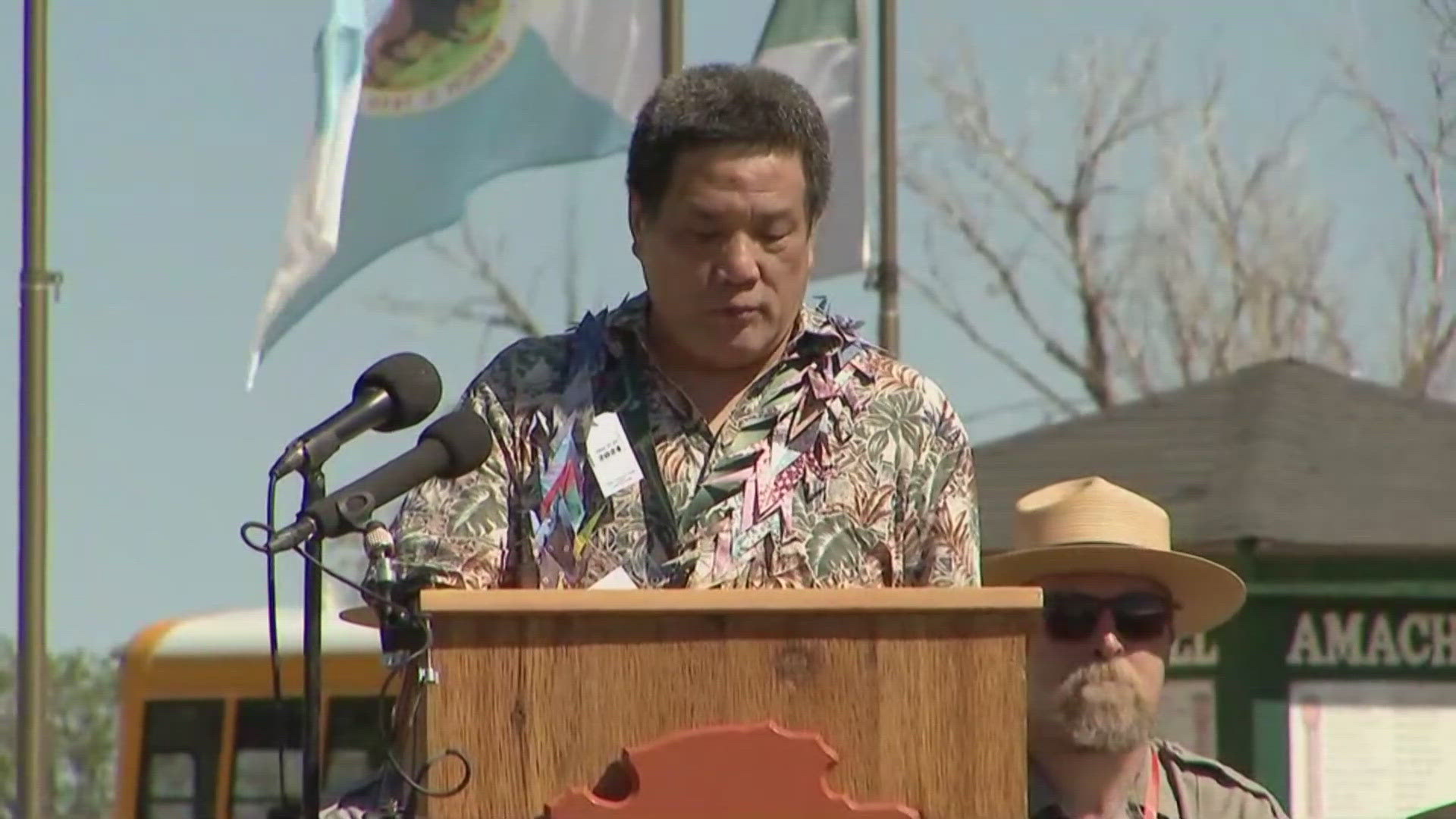GRANADA, Colorado — The dedication ceremony for the Amache National Historic Site in southeastern Colorado, formerly known as Camp Amache, was held Friday.
Amache, also known as the Granada Relocation Center, was one of 10 forced internment sites established by the War Relocation Authority during World War II to detain Japanese Americans who were forcibly removed from the West Coast of the United States.
Descendants of those who were forced into the camp were joined by several lawmakers from Colorado to cut the ribbon on the newly named historical site Friday. The descendants had been pushing to get the site recognized for years.
"It has been many years since the U.S. government forced some residents of Granada to give up their land so that 8,000 persons of Japanese ancestry could be housed following their forced eviction from the West Coast," said John Tonai, an Amache descendant. "After the war, there were so many opportunities for all the physical evidence and memories to be erased, yet Amache survived."
U.S. Secretary of the Interior Deb Haaland formally established the landmark in February of this year after President Joe Biden designated the Amache site as part of the National Park System in 2022. More than 10,000 people were incarcerated at Amache from 1942-1945. At its peak., 7,300 people were incarcerated, two-thirds of whom were United States citizens.
The dedication ceremony on Friday coincided with the pilgrimage that descendants hold each year where families travel to the site near the town of Granada.
Janet Tagawa said she remembers hearing her father tell stories of growing up in the incarceration camp.
"It was hardship. It was struggle," she said. "There were losses, and so, when they were here, they tried to make the best of it."
Tagawa said this part of American history is undeniable.
The National Park Service says they are still planning future additions to the site, such as bathrooms, roads, and water stations. The site already has exhibits and rebuilt structures.
Amache’s historic building foundations and road alignments are largely intact, preserved through the years by Amache survivors and their descendants, the Town of Granada, the Amache Preservation Society, and other individuals, institutions and organizations.
> Video below: Former 'Camp Amache' now a historic site
SUGGESTED VIDEOS: Latest from 9NEWS


